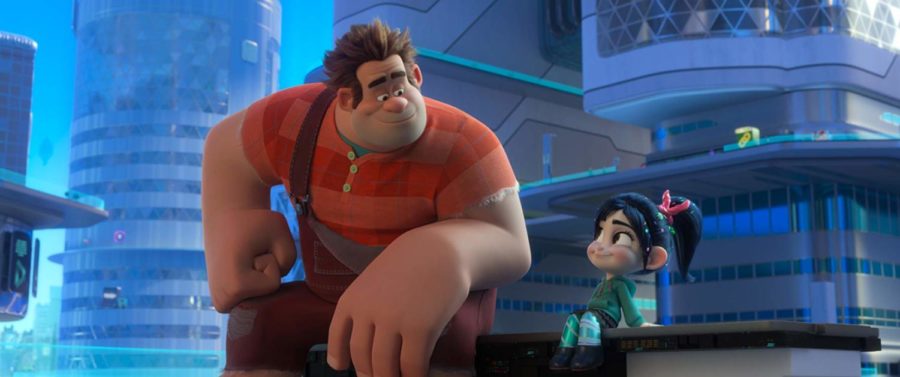If I could compare Ralph Breaks the Internet to a certain food, it would be a blast-from-the-past retro milkshake decorated with multiple Easter-egg cherries and topped with sprinkles of woke self-awareness. In other words, the movie is so ambitiously embellished that it takes away from the main message of the film.
To give credit to the screenwriters and animators, the humorous moments are absolute gems. I caught myself laughing constantly, not only with a smug sense of accomplishment from recognizing all the pop culture references, but also at the string of self-aware jokes running through the film. It pokes fun at a multitude of topics ranging from Disney’s many princesses over the years to quirky aspects of the Internet. I appreciated how Disney tried to redeem its relatively traditional princesses by depicting them as modern heroines who could stand up for themselves. It was a fun throwback to childhood, repackaged for modern audiences.
The simple video arcade setting of the first movie is reframed and thrust into the broad expanse of modern Internet. The striking contrast to the limited setting of the first movie brings attention to just how fast the world is changing. The variability and development happening every day is just one line of social commentary the film touches upon in its decision to tackle the Internet. The visual representation of eBay as an auction corner for rare niche items and BuzzTube as a hub of ever-changing crazy, viral content is a hilarious lens through which to examine such websites. Much like in WALL-E, humans are shown as somewhat irrelevant, surfing around in little chairs to destinations of their choosing. Unlike WALL-E’s critiques of consumerism or obesity, however, this image doesn’t offer especially deep social commentary. Besides some very noncontroversial statements, such as casting the dark web in a negative light, Disney avoids making a comment on the Internet’s influence on our lives. Usually, I walk away from Disney movies with a moral lesson, such as the importance of taking care of the environment (WALL-E) or of family (Incredibles 2), but Ralph Breaks the Internet doesn’t provide such a clear message.
Its main theme deals with the importance of friendship, but this message isn’t complemented with a myriad of other morals that Disney films tend to include. Throughout much of the film, the sweet surprises of character cameos from other Disney movies and the sheer flashiness of the digital world expanding in picture-form distract from Ralph and Vanellope’s friendship, which was swept under the carpet as an afterthought.
It’s very typical to be jealous in friendships, a problem that is compounded with best friends. I personally believe that you can only have one best friend since the word “best” denotes the highest level of friendship. Some might call such a view outdated, but Ralph is clearly on that boat, and even more possessive than I could ever be. Watching him chase after Vanellope like there is no end in sight makes the audience take a step back and reevaluate their own relationships. The moment Ralph realizes his love for his best friend should extend to support of her individual interests is deeply moving. At the same time, it is somewhat saddening to see how long it takes him to reach that realization, and the damage he does before reaching it.
Ultimately, Ralph Breaks the Internet ends with an empowering message that an individual should be able to feel complete independent of others, but that two such identities can come together to form an even more amazing couple. Even with the layers and layers of pop culture around the main message, the film offers a sweet homage to the importance of friendship.









